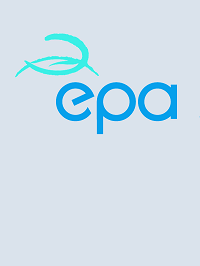The Quality Of Bathing Water In Ireland 2006
This document presents findings and results for 2006 on the quality of Ireland's bathing waters.
Summary: Bathing water quality has generally improved over the past decade. In 2006, 97% (127 of 131 sites) were compliant with the mandatory standards specified in the EU Bathing Water Directive.

Executive Summary
The European Union has prescribed mandatory and guide standards for the protection of public health. Results collated by the EPA for the 2006 bathing season show that the quality of bathing water in Ireland is very good with 97% (127 of 131 sites) of bathing areas complying with the mandatory standards specified in the EU Bathing Water Directive.
The sites which failed to comply with the minimum EU mandatory standard were: Balbriggan (Dublin Fingal) Malahide (Dublin Fingal), Clifden (Galway) and Dunmore East Main Strand (Waterford).
90% of bathing areas (118 of 131 sites) complied with the stricter guide values specified in the Directive. These guide values are quality objectives which all bathing sitesshould endeavour to achieve. The number of sites complying with EU mandatory values in 2006 shows an increase of 1% when compared with 2005. There was also a 1% decrease in guide compliance from 91% in 2005 to 90% in 2006.
Out of the eighteen Local Authorities who have designated bathing areas within their functional areas, eleven complied fully with the EU standards (guide and mandatory) for all of their bathing areas. These were: Cork County Council, Donegal County Council, Dun-Laoghaire/Rathdown County Council, Galway City Council, Kerry County Council, Louth County Council, Mayo County Council, Meath County Council, Westmeath County Council, Wexford County Council and Wicklow County Council.
While the quality of water at designated bathing sites is high, the number of designated sites remains low in comparison to other European countries. To ensure adequate protection of those using bathing areas, the current number of 131 designated sites needs to be increased and a target of 160 is proposed.